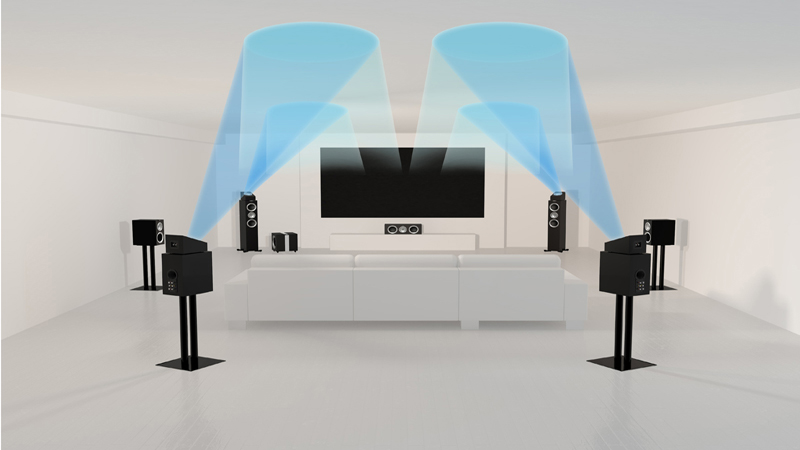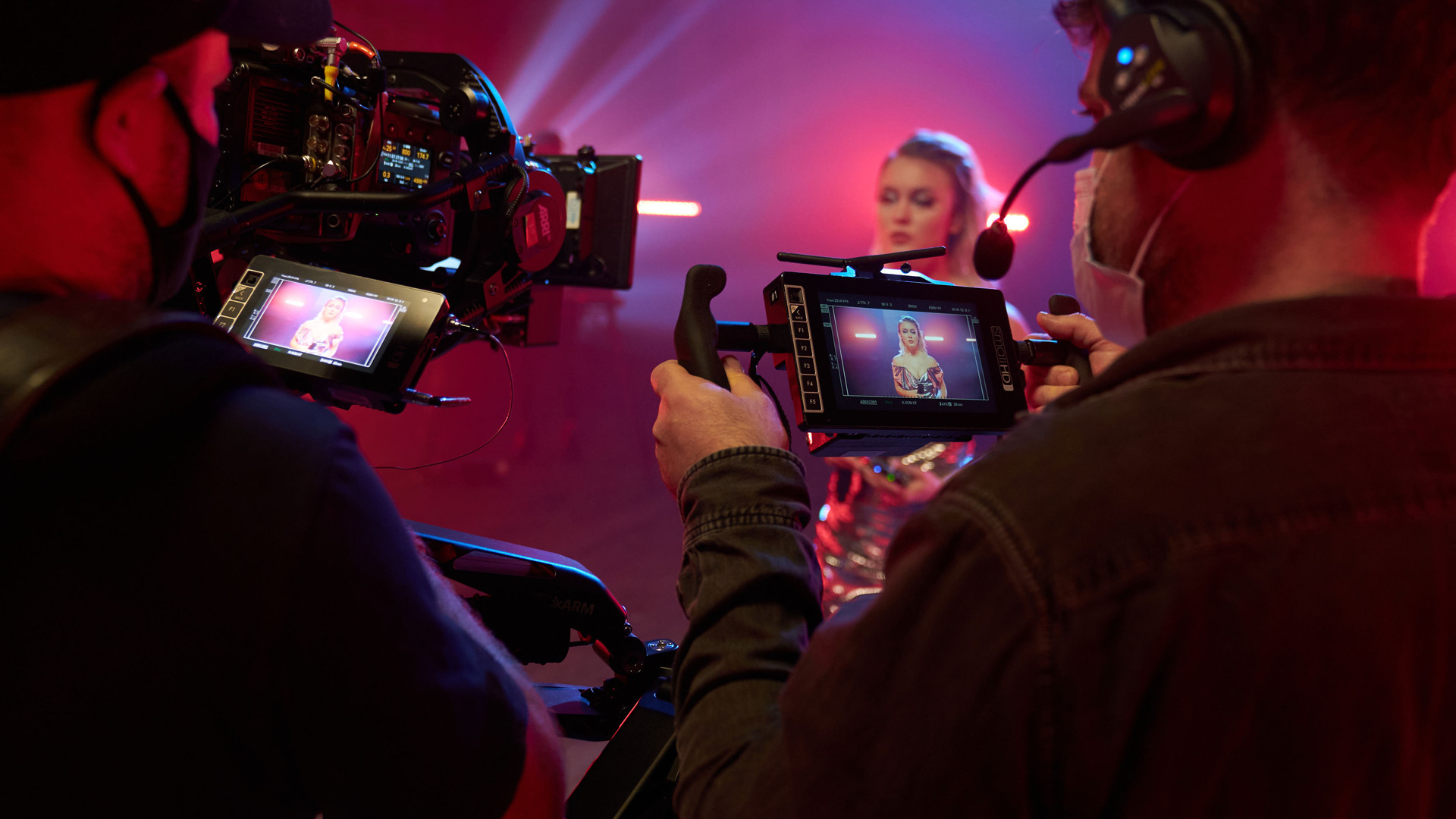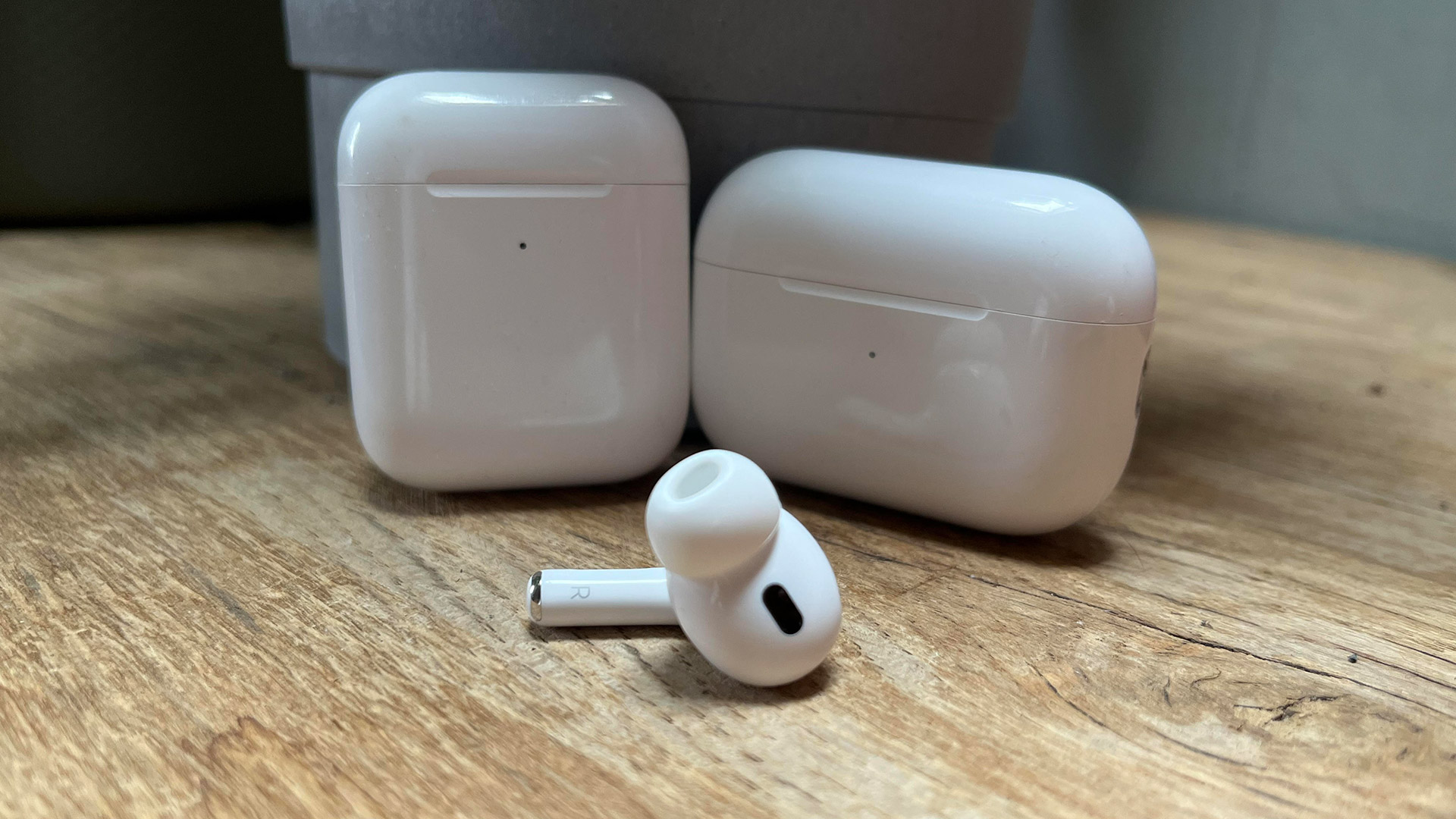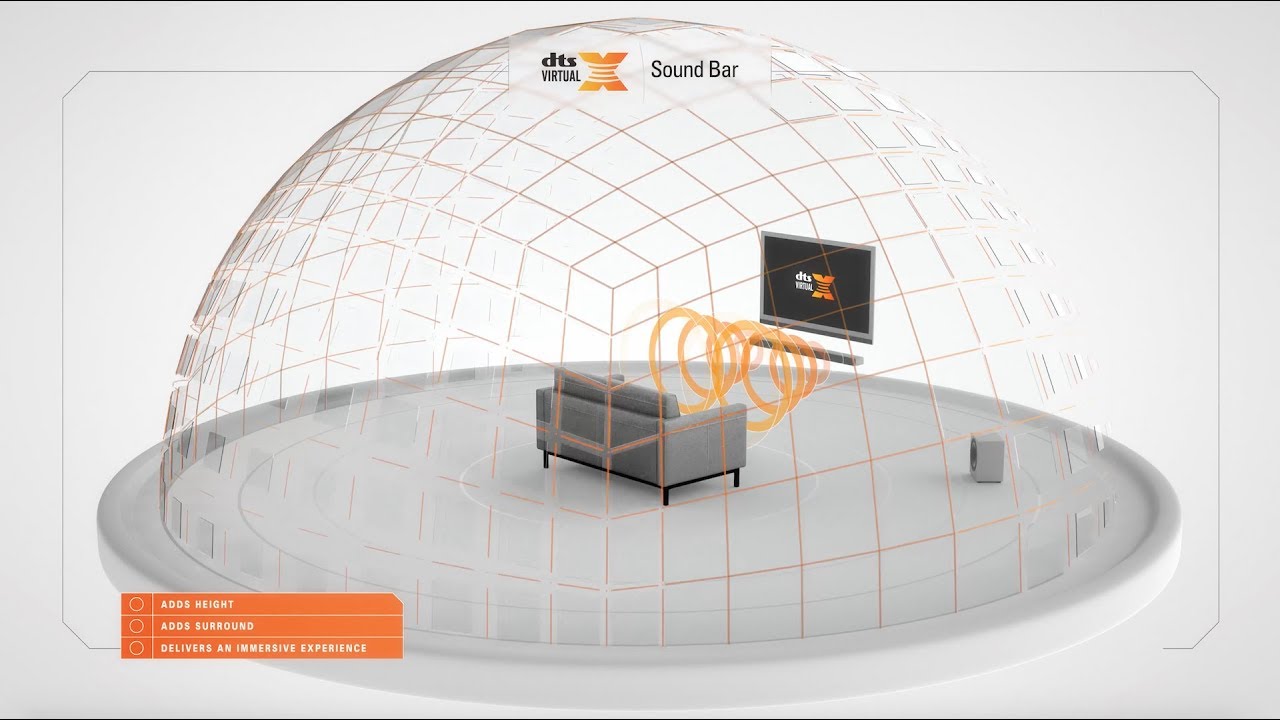What is spatial audio? 3D audio effects explained – and why you want them
Our guide to surround-sound (without the extra noise surrounding it)

If you’re looking to buy some new headphones, a shiny TV set, a set of loudspeakers, a smartphone or another audio gadget, you’re probably having to get your head around a long list of fancy-sounding marketing buzzwords, and one of the most popular out there right now is spatial audio. Which probably has you wondering: ‘what exactly is spatial audio’?
Spatial audio is a much sought-after feature offered within a wide range of products, from audio options such as some of the best Dolby Atmos soundbars and best earbuds and best VR headsets, to source devices such as a smartphone, tablet or TV.
The point of spatial audio is to create a surround-sound effect to make music, movies and games sound more immersive, as though they’re occurring all around you – including overhead – rather than in one place. No longer will the audio in your TV sound like it’s coming from one distant point in your living room: it’ll be taking place all around you. Yes, those bullets can fly past your shoulder.
But there’s a lot more to spatial audio than that, so here’s everything you need to know about the technology.
Spatial audio: what is it?
At a glance, spatial audio – sometimes called 3D audio effects, or in its various guises including (but not limited to) DTS:X, Dolby Atmos, 360 Reality Audio, THX Spatial Audio and Dirac Virtuo – is processing tech which manipulates the sound coming from the drivers in your tower speaker(s), headphones, soundbar, tablet, laptop or smartphone, to make music and movies sound like they're taking place in the space around you.
Spatial audio works to artificially make it feel as though sound is surrounding you, rather than just coming from the one direction in which said speaker resides.
And thanks to the nature of closed-back headphones, spatial audio can be further manipulated here. Here, "head-tracked spatial audio" can actually make it feel as though you're surrounded by music and moving through it, as you might if you were able to simply walk through an orchestra, turning your head to the strings, brass and percussion. This uses your source device as a focal point (ie. your tablet might be the orchestra), but still applies the directional filters to create a three-dimensional soundscape. Yes it's cool, when done well.
Sign up for breaking news, reviews, opinion, top tech deals, and more.

Also often referred to as virtual surround sound, spatial audio is a near-replacement for expensive home theater set-ups or music hi-fi systems that requires fewer physical components taking up space in your sitting room or den, and a much smaller financial outlay as a result. It enhances your music-listening or movie-watching experience in myriad ways, and it's actually better than surround sound in one way: it can make audio sound like it has a vertical component too, not just a horizontal one.
You may have used spatial audio without knowing: Dolby Atmos is a special kind of spatial audio created by Dolby; 360 Reality Audio is Sony’s own version, and many other companies call it by slightly different things in their own marketing materials and apps. These all vary slightly in how they create their effects, but the end result for you is largely the same.
As mentioned above, some spatial audio-supporting portable devices (mostly wireless earbuds and some of the best over-ear headphones) take it a step further, by using head-tracking to work out where a sound should be in relation to you. So if a dinosaur roars to your left, but you turn to face it, the roar should be in front of you.
Spatial audio: why should you want it?
The benefits of Spatial Audio vary depending on whether you’re listening to music or watching a movie or show or playing a game, but to summarize in one word: immersion.
When you’re listening to music, spatial audio creates a sense that the music is all around you, as though you’re in an intimate music venue listening to the song being performed live. And we think that's quite a big perk.

If you’re listening to rock, the rhythm guitar might be noticeably to one side while the lead guitar is on the other. In jazz, you’ll be able to hear the different instruments spread out as though you’re in a smoky bar listening to a quartet live. Turn on some classical and it’ll be like you’re in a concert hall: violins to one side, cellos to the other, brass as far away as possible.
This all helps you appreciate the intricacies and nuances of a song, and also makes music feel all-encompassing and immersive rather than something being dripped into your ear by some inexpensive earbuds.
So what about movies and TV shows? One of the reasons why a movie theater is so immersive is that the audio speakers are all around you, and it means that sounds are too: a lightsaber wooshing on the left of the screen will sound like it’s coming from your left, while a romantic line echoed in the character’s right ear will come from the right of the screen, and an all-encompassing battle scene will sound like it’s all around you.
Spatial audio is essentially a way for your headphones, TV or other sound-giving device to give you a similar performance but on a smaller scale. Sound will be panned to different areas around you, so you feel immersed in the audio-visual experience as the story plays out around you.
And when gaming, Spatial Audio options like Razer THX or JBL Quantum (see our JBL Quantum 910X review for more) are arguably even more important than ever. They'll let you fully submerge yourself into a world you're exploring, alert you to the sparkle of a collectible nearby, or hear an enemy tip-toeing around behind you so you can accurately pin-point where they are.
Spatial audio: how can you get it?
These days, most songs and albums on the best music streaming services can be upscaled to spatial audio by the proprietary tech baked right into headphones or earbuds that boast it, simply by toggling it on in the companion app.
But there are a few ecosystem caveats: to get head-tracked Spatial Audio (which is the term Apple uses) in your AirPods Max, AirPods 3 or AirPods Pro 2, for example, you'll need to be streaming content from an iOS device also. But as long as you toggle it on from your iPhone (which is done by opening Control Center, touching and holding the volume control, then tapping Spatial Audio at the lower right) you'll get regular Spatial Audio on any headphones – wired or wireless, from your iPhone.
And consider the newer Sonos Ace headphones. These deliver spatial audio Sonos ecosystem magic if you have a Sonos soundbar. Pair the Ace with your Sonos Arc (support for other soundbars is promised via update in later summer or fall 2024) to take the sound from your 'bar and pump it to your ears, using head-tracked 3D spatial audio. In our review, we said it "works perfectly, and sounds absolutely fantastic…I think they're my favorite headphones for movies to date.". This Dolby Atmos spatial audio support extends to Bluetooth devices too, and this is easily the best features on the Ace headphones' spec-sheet.
Essentially, to enjoy spatial audio you’ll need a device that supports it, and will (usually) also need to find a video or song that's been encoded in a format that supports spatial or 3D audio.

There are a few different names for spatial audio offered by companies, so when you’re buying a new set of cans, earbuds, soundbar or the like, check out its feature list to see if it’s compatible.
Apple has a list of its compatible devices, and you can also check out Sony's rundown of its 360 Reality Audio. Want Dolby Atmos? See Dolby's list of Dolby Atmos compatible devices here.
Given that spatial audio, under its various monikers, is a big selling point, you’ll likely see it talked about in promotional materials for any new product.
Next up, content. So, movies: you’ll need to watch something that supports spatial audio, and this is where it can get a little bit tricky. It all depends on which service you get your entertainment from and which video or song you’re trying to play.
If you want to use spatial audio to enjoy music, there are select streaming services you can use freely – the big ones are Apple Music, Tidal and Amazon Music Unlimited. At the time of writing, Spotify and Google Play Music don’t offer spatial audio catalogues, but patents suggest that the former, at least, is looking into it.
For movies and TV shows, most streaming services offer some spatial audio content, but it's almost always locked behind premium subscription tiers. On Netflix and Disney Plus you need to be a Premium subscriber, Paramount Plus requires you to be on its Paramount Plus with Showtime plan and Max needs you to sign up to its Ultimate tier. Even then, not all content will have Spatial Audio, but a lot more does, especially blockbuster movies.
Apple TV Plus supports Spatial Audio on its sole plan while Prime Video has it on certain videos, and again you won’t need to pay any extra for that.
Most streamers have a tag for spatial audio movies and shows, but not all do. A fairly well-hidden Netflix tag lists all of its compatible offerings, though.
It’s well-worth pointing out, however, that a few products offer a faux-spatial audio that creates a similar effect for movies or songs that don’t officially support the feature in itself – see the Bose QuietComfort Earbuds Ultra for starters. It’s a nice workaround for those who don’t want to pay out the ears for a premium streaming service.
Spatial audio: do you need it?

As with most things in the world of audio buzzwords, you don't need spatial audio; it's not like you literally won't be able to enjoy your music, game or movie without it. Instead, spatial audio is simply a way to enhance the listening experience; worth it if you can afford the tech and put a lot of value in immersive entertainment.
For watching movies and TV shows, spatial audio will put you several steps closer towards creating an all-encompassing home entertainment system. With more and more new movies hitting streaming services instead of theaters, it's a valuable investment.
In terms of music, audiophiles may enjoy the nuance that spatial audio brings to sounds, but it's worth pointing out that spatial audio isn't the same as high-fidelty music, and if you have to pick only one new sound tech to get involved with, hi-res audio (along with one of the best hi-res music players and a Qobuz subscription) might help you better enjoy the detail in your music.
It's in the gaming realm that spatial audio is perhaps most important; not only is immersion (arguably) a more important factor, but being able to hear sound from all directions can be vitally useful in competitive games. Remember, though, that spatial audio comes built-in and well-promoted on many of the best wireless gaming headsets, so it'll be easy to find.
You might also like
- See our Cambridge Audio Melomania P100 review for excellent over-ears with no proprietary spatial audio tech (because Cambridge doesn't want to mess around with music)
- I listened to Taylor Swift’s new songs on a 22-year-old Sony Walkman and it was a tortured experience I won’t try again
- I switched through all the best music streaming services for a month to compare them – here are the 7 biggest things I learned

Tom Bedford joined TechRadar in early 2019 as a staff writer, and left the team as deputy phones editor in late 2022 to work for entertainment site (and TR sister-site) What To Watch. He continues to contribute on a freelance basis for several sections including phones, audio and fitness.
- Becky ScarrottAudio Editor